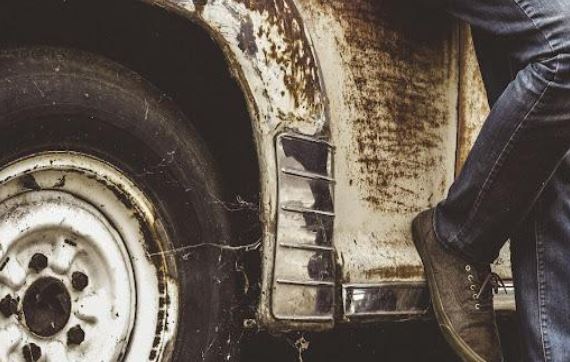Effective brakes and the ability to apply sufficient pressure on the brake pedal are required to prevent accidents and sudden stops.
If you are a professional truck driver, only choose the best boots for truck drivers, because your safety and comfort depend on them.
And in this article, we would like to focus on the risks associated with wearing unsuitable shoes while driving and make some recommendations to improve driving safety.
There are no legal requirements for driving shoes. Most road safety regulations require drivers to wear clothing and shoes that do not interfere with their use of the controls of the vehicle.
Therefore, it is not illegal to drive barefoot, in heels or flip-flops. But obviously it is very dangerous and we need to explain to the public why!
Driving barefoot
While the choice is driving in flip-flops, heels or barefoot, the latter option is obviously the safest. There are some drivers who find it a little easier to drive barefoot because it gives them a better feel for the car, particularly the grip point. As a result, driving barefoot helps some avoid slipping the car.
But don’t forget that driving barefoot also comes with some risks:
- The clutch may require a lot of pressure.
- It is a relatively small pedal that puts a lot of pressure on the foot’s ball, while the sole distributes this pressure more smoothly.
- Your foot can easily slip off the pedal because you don’t have the grip that shoes give.
- In an accident case, great driving shoes are likely to help reduce foot injuries.
- In traffic accidents where shoes do not protect your feet, you can step on broken glass and shards and be seriously injured.
Driving in flip-flops
Research has shown that flip-flops are the most dangerous of driving shoes-even more dangerous than the oft-discussed and criticized high-heeled shoes!
Why?
- Flip-flops have insufficient ankle support, causing the foot to slip off the pedal or not get on the pedal at all.
- They come off too easily and easily get stuck/jammed under the pedal.
- Getting the pedal stuck between the sole of the foot and the flip-flop results in reduced vehicle controllability.
- Flip-flops make it difficult to brake effectively because they increase the time it takes to brake.
- They make it tough for the driver to fully brake or release the clutch or gas pedal brakes.
- Slipping flip-flops off the driver’s foot distracts the driver, who tries to find the flip-flop and put it back on his foot.
- If no other pair of shoes is available, it is safer to take off your flip-flops and drive barefoot.
Driving with high heels and platform shoes
Female drivers are often warned about the dangers of driving in high heels! But why is it so dangerous?
- To drive safely, the heel of your foot must be on the floor to press the pedals properly.
- The gas pedal and brake pedals work when your heel is on the floor.
- When the heel of your foot rests on the floor of the car, the driver can move from the gas pedal to the brake and press the pedals faster and easier.
- Heels elevate it and distort the ability to determine how much pressure to apply.
- Heels reduce traction due to an uncosy driving position
- Heels also carry the added risk of the heel getting stuck in the floor mat.
- Getting stuck under the pedal or on the carpet/floor mat poses a serious risk – you won’t be able to react quickly when you have to brake or accelerate.
- The only thing worse than high heels are platform sandals – double whammy: thick soles and high heels.
- Ladies who wear heels or platform shoes, it is better to re-shoe them before leaving the car.
Other shoes
There are other shoes that can also pose some risk to safe driving. Boots can restrict ankle movement, and knee-length shoes can snag on the seat.
Even if lightweight sneakers are ideal, remember that some running shoes may not be the best shoes for driving because their soles are thick and soft.
Tips for choosing shoes for safe driving
We’ve discussed many risks, but what do we recommend? Although some athletic apparel manufacturers offer special shoes for motorsports professionals, we would like to offer recommendations for regular drivers:
- Your shoes/shoes should be comfortable enough for prolonged driving.
- The most important attention should be paid to the sole of the shoe.
- The sole should be too thin or too thick.
- It should not be very soft or very flexible, and should have enough grip on the pedal.
- It should be lightweight to ensure ease of movement – it is important not to interfere with ankle movement when operating the various pedals.
- Make sure that the sole is not so wide that it can cause you to step on two pedals at the same time.
- The thickness of the sole of the shoe should be no more than 2.5 cm, but 4 mm is best.
- Basic sneakers and regular flat-soled shoes are best for driving.
- Typical leather shoes worn by business people are a good choice for driving.
- They fit well without causing discomfort and are bulky enough to provide some protection for the feet in collisions.
- In the event of a car breakdown or flat tire, it is better to have comfortable shoes than to stand barefoot or in high heels next to the road.

